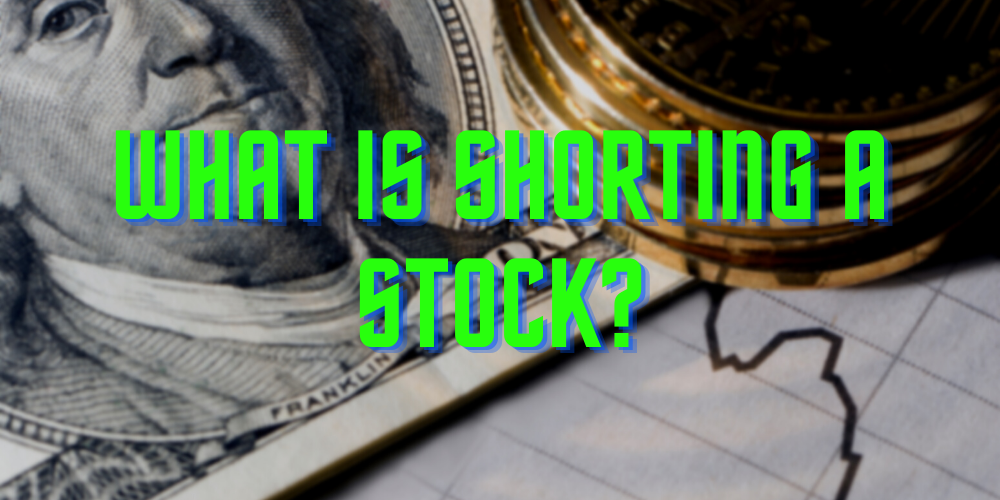As a trader, you may have wondered “what is shorting a stock?” How can you use this strategy to your advantage in the stock market? Read on to know the risks and rewards associated with shorting stocks and some tips on how to get started.
The Basics of Shorting A Stock
Shorting a stock, or short selling, is the process of selling borrowed shares and then buying them back at a lower price. The difference between the initial sale price and the final repurchase price is your profit.

The short seller, also known as a “shorter,” sells stocks they do not own. The short seller borrows stock from a broker and then sells those shares at their current market value.
After selling the stock, the short seller must purchase the same number of shares to return them to the broker.
How Does Short Selling Work?
Short selling is a common investment strategy in the stock market. Most investors use it to profit from a decline in the stock price or other security.
When you short-sell, you are borrowing shares and securities with the hope that their price will fall before you have to buy them back.
You then use the proceeds from this sale to repurchase the same number of shares at a lower price. As long as the price does fall, you can pocket the difference as profit.
Risk and Benefits of Short Selling
Short selling can be very profitable under certain circumstances, but it also carries substantial risk. Before engaging in short selling, it’s important to understand both the risks and the potential rewards involved.
Risks
When you trade stocks the traditional way, by buying low and selling high, your initial investment is the most you can lose. However, it is different when you sell short because your losses may be theoretically unlimited.

Short selling is risky because if the stock rises instead of falling, you’ll end up losing money on your short sale transaction.
Since short sellers must eventually buy back their borrowed shares at higher prices, there’s always a chance that they’ll end up paying more than they originally received for them in the first place.
There are two types of risk associated with short selling: market risk and credit risk.
- Market risk: The risk that the price of the security will increase, resulting in a loss for the short seller.
- Credit risk: The risk that the borrower will default on the loan, leaving the short-seller responsible for repaying the loan.
When short selling, it is important to remember that you are effectively taking on two positions: a long position in the security you are borrowing, and a short position in the security you are selling.
This means that you are exposed to the risk of loss in both positions. As such, short selling is not for everyone and should only be undertaken by investors who are willing and able to accept the risks involved.
Benefits
Short selling can be a profitable way to trade if done correctly. It allows investors to profit when the price falls and can provide them with leverage.

Below you can find the several benefits to sell short:
- It allows investors to profit from a stock’s decline or other investments without having to take on much risk.
- It provides diversification for portfolios because it exposes investors to all asset classes.
- It can provide liquidity for investors who want a quick exit from an investment position.
- You can make money if a stock’s price drops. If you short a stock at $20 per share and it goes down to $10 per share, you’ve made $10 per share or $1,000 on your investment.
- If you have a margin account with your broker, you can open and close positions quickly without having to put up collateral for the position. This means you can get in and out of positions faster than if you were using cash or margin trading securities such as mutual funds or ETFs.
Rules for Short Selling
The rules for short selling are designed to prevent investors from engaging in illegal short selling and to prevent market manipulation.
The Securities and Exchange Commission (SEC) has rules that govern the short sale of stocks, but there are also rules and regulations governing shorting options.

These vary from country to country, but some of the more common ones include the following:
- The investor must first borrow the security from another party before selling it.
- The short sales must be made with the hope that the price of the security will fall so that it can be bought back at a lower price and returned to the lender.
- If the price falls as expected, the short seller will make a profit. If the price rises, however, the short seller will incur a loss.
- The borrower must have a brokerage account with a broker that offers this service.
- The terms of the loan will be agreed upon between the borrower and the lender, and will typically involve a fee.
- The borrower will also be required to post collateral, in the form of cash or securities, equal to the value of the loan.
- Short selling may be subject to a limit, known as an “uptick rule,” which requires that the price of the security must rise by a certain amount before it can be sold short.
- There may also be other restrictions, such as a “circuit breaker,” which is a rule that temporarily halts short selling when the price of a security falls by a certain percentage.
What is Shorting a Stock? Final Thoughts
So, should you short sell? That’s a question that only you can answer.
The risks and rewards are both clear, and it ultimately comes down to your personal risk tolerance and how confident you are in your analysis.
It is important to remember the risks involved with this type of trading strategy and to always use limited orders to protect your profits. With a little bit of practice, you too can become a successful short seller.


 Tags:
Tags:










